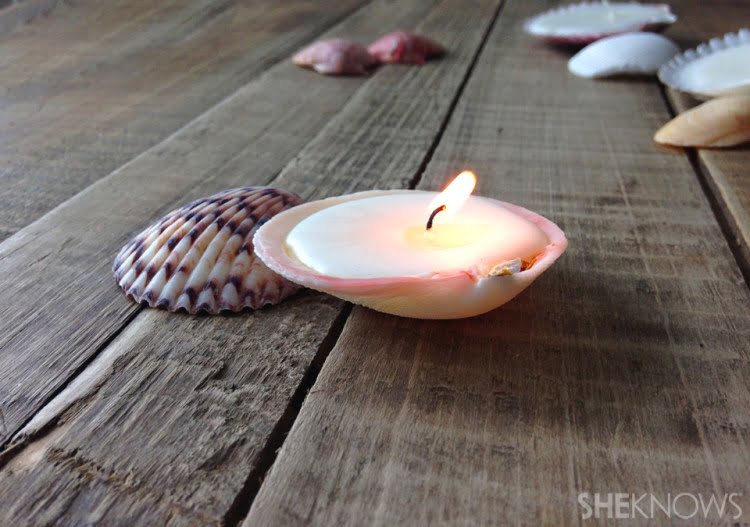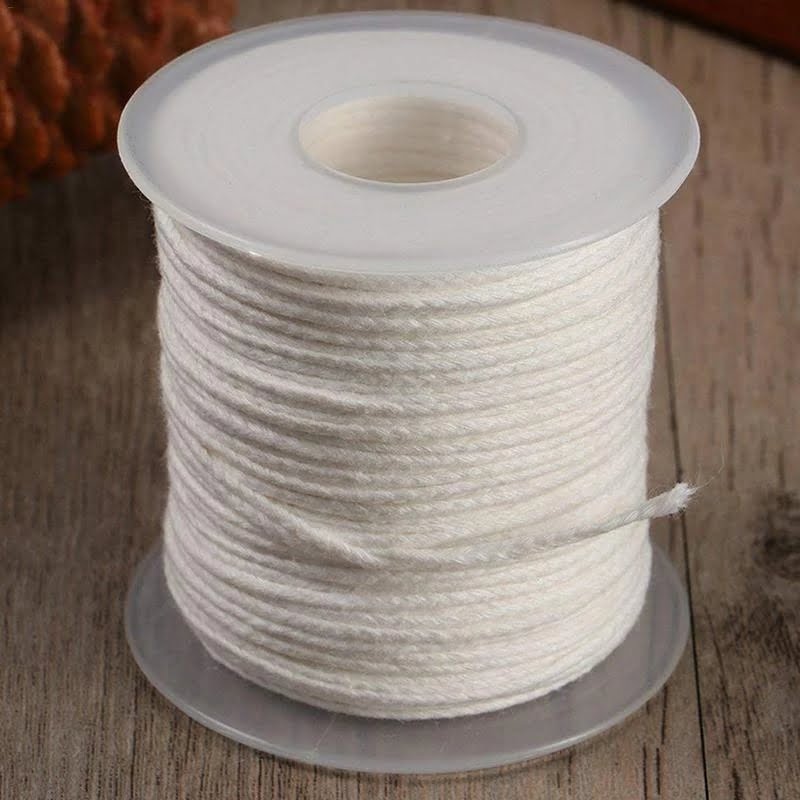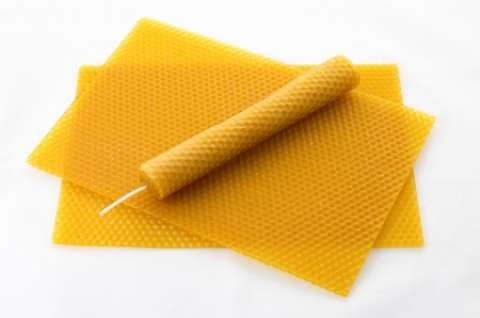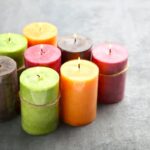The art of candle-making has experienced a resurgence in recent years, captivating individuals with its allure of creativity and therapeutic benefits. As people seek to find joy and relaxation in their daily lives, making candles at home has become an increasingly popular hobby.
This article will delve into the essentials of starting your candle-making journey, providing not only a guide to the necessary equipment but also exploring the different types of wax, fragrance options, additives, wicks, and safety precautions.
There are numerous benefits to diving into the world of candle-making from the comfort of your own home. One major advantage is the ability to personalize your candles according to your taste and preferences.
By selecting specific scents, colors, and designs, you can create unique pieces that perfectly reflect your style or even serve as thoughtful gifts for loved ones. Furthermore, making candles at home can be a cost-effective alternative to purchasing store-bought options, particularly when considering the prices of high-quality candles.
Creating candles from scratch using natural ingredients also appeals to those who value sustainability and eco-consciousness. With various types of wax available – such as soy wax known for being clean-burning and paraffin wax recognized for its affordability – individuals can choose materials that align with their environmental goals. Additionally, utilizing fragrance oils or essential oils allows for customization while avoiding synthetic additives commonly found in commercial candles.
Essential Equipment for Candle-Making
To start making candles at home, it is essential to have the right equipment. This section will discuss the necessary tools needed for candle-making, ensuring a successful and enjoyable experience.
The first piece of equipment required is melting equipment, such as a double boiler or dedicated candle-making pot. The purpose of this equipment is to melt the wax gently and evenly without causing any scorching or burning. It is important to use dedicated equipment for candle-making instead of repurposing kitchen utensils to ensure wax residue does not contaminate food preparation areas.
Another crucial tool for candle-making is a thermometer. Temperature control is vital in candle-making as it affects the quality and performance of the finished product. A thermometer allows you to measure temperatures accurately, ensuring that the wax is heated to the appropriate temperature before adding fragrance oils or other additives.
A weighing scale is also necessary for precise measurements of wax, fragrance oils, and additives. Measuring ingredients by weight rather than volume ensures consistency in candle-making and helps achieve optimal results. Look for a digital scale that measures in grams or ounces for accurate measurements.
In addition to melting equipment, a thermometer, and a weighing scale, you will need candle molds or containers depending on your desired shape and size of candles. Candle molds can be made from various materials like silicone or metal, while containers can be glass jars or tins.
To keep wicks centered during the pouring process, a wick sustainer is essential. This small metal piece attaches to the bottom of the wick and holds it in place while pouring hot wax into molds or containers. Using a wick sustainer ensures that your candles burn properly and evenly.
Stirring utensils are also required when making candles. Options like wooden spoons or heat-resistant silicone spatulas work well for mixing wax with fragrance oils or other additives. Avoid using plastic utensils as they may melt when exposed to hot wax.
Lastly, it is crucial to prioritize safety when making candles. Gloves, goggles, and aprons are necessary to protect yourself from potential hazards. Gloves prevent burns, goggles shield your eyes from splashes or fumes, and an apron helps keep your clothes clean and protected.
By having the essential equipment for candle-making, you can embark on a rewarding journey of creating your own unique candles at home. With these tools in hand, you are ready to move on to the next exciting step – exploring different types of wax and their characteristics.
Different Types of Wax and Their Characteristics
When it comes to candle-making, choosing the right wax is essential for achieving the desired results. There are several types of wax available, each with its own characteristics and qualities. Understanding these differences will help you make an informed decision when selecting the best wax for your candles.
1. Soy Wax:
Soy wax has gained popularity in recent years due to its eco-friendly nature and clean-burning properties. Made from soybean oil, this wax is biodegradable and renewable, making it an excellent choice for environmentally conscious individuals. It also has a lower melting point, which means a longer burn time for your candles. Soy wax is known to hold fragrances well, allowing for a strong scent throw in candles.
2. Paraffin Wax:
Paraffin wax is one of the most commonly used waxes in candle-making due to its affordability and excellent fragrance retention. It has a high melting point, which contributes to a longer burning time compared to other waxes. Paraffin candles tend to have vibrant colors and smooth finishes. However, it is not considered as eco-friendly as soy or beeswax since it is derived from petroleum.
3. Beeswax:
Beeswax is a natural option that offers its unique characteristics and benefits. This type of wax emits a subtle honey-like scent when burned, adding to the overall sensory experience of your candles. Beeswax has a high melting point and doesn’t require additives or chemicals for stabilization. Additionally, beeswax produces less soot than other waxes, resulting in cleaner burning candles.
4. Coconut Wax:
Coconut wax has gained attention in recent years for being a sustainable choice with excellent scent throw capabilities. It burns cleanly and evenly while offering a great fragrance payoff in candles. Coconut wax also blends well with other types of waxes like soy or beeswax for customized formulations.
When considering which wax to use for your candle-making projects, consider factors such as burn time, fragrance retention, sustainability, and your personal preferences. Each type of wax brings its own unique qualities to the table, allowing you to create candles that suit your needs and desires. Remember to experiment and have fun with different types of wax to find the perfect match for your candle creations.
Fragrance Oils and Essential Oils
When it comes to creating candles, fragrance plays a crucial role in enhancing the overall experience. Whether you prefer a candle with a strong aroma or a subtle scent, there are various options available to suit your preferences. Two popular choices for adding fragrance to candles are fragrance oils and essential oils.
Fragrance oils are specifically formulated for candle-making and are designed to withstand the heat of the melted wax. They offer a wide range of scents, from floral and fruity to bakery and holiday-inspired fragrances. Fragrance oils provide excellent scent throw, meaning that they release their aroma effectively when the candle is burned. They are also known for their long-lasting nature, allowing you to enjoy your favorite scent for hours on end.
Essential oils, on the other hand, are derived from plants and offer natural scents that can add an earthy or botanical touch to your candles. While essential oils can be used in candle-making, it’s important to note that they may require a higher concentration compared to fragrance oils in order to achieve a pronounced fragrance.
Additionally, not all essential oils are suitable for candle-making as some may have a low flashpoint and could potentially be flammable when exposed to high temperatures.
To determine which option is best for you, consider your personal preferences as well as any safety concerns you may have. Both fragrance oils and essential oils come in a wide variety of scents, allowing you to choose fragrances that align with your desired ambiance or mood. It’s also important to purchase high-quality fragrance oils and essential oils from reputable suppliers to ensure optimal performance and safety.
In summary, whether you opt for fragrance oils or essential oils, incorporating these scented components into your homemade candles will enhance the overall candle experience by providing delightful aromas that can transform any space into a cozy and inviting atmosphere.
| Fragrance Oils | Essential Oils |
|---|---|
| Formulated for candle-making | Natural and derived from plants |
| A wide range of scents available | Offer a more earthy or botanical touch |
| Long-lasting aroma with excellent scent throw | May require higher concentration for pronounced fragrance |
| Wide availability and variety of suppliers | Careful selection is necessary to ensure safety and performance |
Additional Additives to Enhance Candle Performance
Color Dyes for Creative Effects
One way to add your personal flair to homemade candles is by incorporating color dyes. Color dyes are available in both powder and liquid forms and allow you to achieve any desired hue or creative effect. Whether you prefer vibrant and bold colors or pastel shades, color dyes offer endless possibilities for customization.
When using color dyes, it’s crucial to start with a small amount and gradually increase the intensity until you achieve your desired color. Remember that certain waxes may require more dye than others to achieve the same color saturation. Additionally, experimenting with different combinations of colors can result in unique and eye-catching candle designs.
Protecting Your Candles with UV Stabilizers
If you plan on displaying your homemade candles in areas exposed to sunlight, it’s important to consider using UV stabilizers. UV stabilizers help protect candles from fading or discoloration caused by exposure to the sun’s rays. This additive ensures that your candles maintain their vibrancy and visual appeal over time.
UV stabilizers can be easily incorporated into the wax during the melting process. Follow the manufacturer’s instructions carefully to ensure proper usage and dosage. By including this additive, you can confidently showcase your candles without worrying about sunlight diminishing their beauty.
Candle Enhancers for Maximum Performance
For those seeking optimal performance from their homemade candles, certain additives known as candle enhancers can be used. Candle enhancers are designed to improve various aspects of candle performance, such as scent throw, burn pool formation, and reduced soot production.
One popular type of candle enhancer is a scent throw booster. Adding this ingredient helps maximize the fragrance released by the candle when lit, ensuring a more enjoyable aromatic experience. Another common option is a burn pool modifier, which promotes an even melt pool formation across the surface of the candle, allowing for longer burning times.
When using candle enhancers, it’s essential to follow the recommended dosage instructions from the manufacturer. Overusing these additives can negatively impact candle performance, so it’s crucial to find the right balance for optimal results.
By incorporating color dyes, UV stabilizers, and candle enhancers into your candle-making process, you can elevate the overall quality and appearance of your homemade candles. These additional additives provide endless possibilities for customization while ensuring a long-lasting and visually appealing candle that enhances any space.
Wicks and Wick Sizes
When it comes to candle-making, selecting the right wick and wick size is crucial for achieving optimal burning performance. The type and size of the wick will determine how efficiently the candle burns, ensuring a consistent flame and even wax melt pool. Therefore, it is essential to understand the factors that influence wick selection.
There are different types of wicks available, each offering distinct characteristics. Flat braided wicks are widely used and provide a stable burn with minimal mushrooming or soot production. Square braided wicks have more rigidity and are suitable for large diameter candles or those made with beeswax or vegetable-based waxes. Cored wicks have a center core made from materials like cotton or paper that help provide added stability for larger candles or those with high fragrance loads.
Choosing the right size of the wick is equally important. The diameter of your candle container or mold will determine the appropriate size of the wick needed to create an ideal burn.
If the wick is too small, it may result in tunneling, where only a small portion of wax melts and doesn’t reach the edges of the container. On the other hand, if the wick is too large, it can create excessive heat and cause sooting or uneven burning.
To find the perfect match for your candle, consider conducting test burns using different wick sizes. Start with a smaller size than you think you’ll need and gradually increase until you achieve an even burn pool that reaches all sides of the container without excessive smoking. Keep notes on each test burn to track your progress and make adjustments accordingly.
By taking the time to experiment with different types and sizes of wicks, you can ensure that your candles burn safely and effectively while achieving desired results in terms of longevity, scent throw, and overall aesthetic appeal. Remember to always follow safety guidelines when handling hot wax or open flames to minimize any potential risks during your candle-making journey.
Candle Safety and Tips for a Successful Candle-Making Journey
Essential Safety Precautions
When it comes to candle-making, safety should always be a top priority. Working with hot wax and open flames can be hazardous if proper precautions are not taken. Here are some essential safety measures to follow for a successful and safe candle-making journey:
- Proper handling of hot wax and melting equipment: Always use caution when working with hot wax. Be sure to wear heat-resistant gloves to protect your hands from burns. When melting the wax, use a designated pot or double boiler to prevent accidents and ensure even heating. Avoid overheating the wax as it can become flammable.
- Fire safety measures during the candle-making process and while burning candles: Keep a fire extinguisher nearby in case of any emergencies. Never leave melting wax unattended, as it can ignite quickly if exposed to an open flame or excessive heat. Similarly, never leave burning candles unattended or in rooms without supervision.
- Ventilation: Adequate ventilation is crucial when making candles, especially if working with fragrances or additives that release fumes. Ensure that you are in a well-ventilated area or set up proper ventilation systems such as fans or open windows to disperse any potentially harmful fumes.
Tips for a Successful Candle-Making Journey
While safety is paramount in candle-making, there are also various tips and tricks that can help you achieve professional-looking and high-quality candles:
- Test, test, test: Before making large batches of candles, always perform small test runs using different wicks, fragrances, and additives to determine which combinations work best for you. This allows you to make adjustments and avoid costly mistakes.
- Preparing containers: Ensure that your candle containers are clean and dry before pouring the melted wax into them. Any moisture or impurities can affect the quality of the finished product.
- Consistent temperature monitoring: Keep a close eye on the temperature of the melted wax. Different types of waxes have specific optimum pouring temperatures, and exceeding these can result in poor fragrance retention or poor burning performance.
- Proper wick sizing: Choosing the right wick size is crucial for achieving an optimal burn. A wick that is too small may result in a tunneling effect, while a wick that is too large can cause excessive flickering and soot production. Match the wick size to the diameter of your candle container or mold for best results.
- Experiment with fragrances and additives: Candle-making allows you to get creative with scents and additives. Don’t be afraid to experiment with different combinations to create unique and enticing aromas. However, remember to follow recommended guidelines for maximum fragrance load percentages to avoid overpowering or compromising the quality of your candles.
By following these safety precautions and implementing these tips throughout your candle-making journey, you can ensure not only a safe experience but also produce high-quality candles that you can enjoy or share with others. Embrace the artistry, express your creativity, and start your candle-making adventure today.
Conclusion
In conclusion, candle-making provides a rewarding and enjoyable hobby that is gaining popularity for several reasons. By making candles at home, individuals can personalize their creations, save money, and have control over the ingredients used. To begin this adventure, it is essential to have the necessary equipment, such as melting equipment, thermometers, weighing scales, molds or containers, wick sustainers, stirring utensils, and safety gear.
When it comes to choosing candle wax, there are various options available that offer different characteristics. Soy wax is known for its eco-friendly nature and compatibility with fragrances, while paraffin wax is affordable and retains fragrance well. Beeswax emits a subtle honey-like scent and coconut wax burns cleanly while providing excellent scent throw.
Fragrance oils and essential oils play a crucial role in enhancing the candle experience. Candle-specific fragrance oils are formulated to withstand the heat of melted wax and offer long-lasting aromas. Essential oils provide natural scents but may require higher concentrations for a pronounced fragrance. Additionally, there are optional additives like color dyes, UV stabilizers, and candle enhancers that can further enhance the quality and appearance of candles.
Considering wicks and their sizes is vital for optimal burning performance. Different types of wicks like flat braided or cored wicks offer distinct characteristics that should be matched with the diameter of the candle container or mold.
By following essential safety precautions during the candle-making process and while burning candles, individuals can enjoy this hobby safely. It is crucial to handle hot wax properly and be mindful of fire safety measures.
Overall, starting a candle-making adventure opens up endless possibilities for creativity and satisfaction. With the right knowledge and essential items outlined in this article, readers can embark on their own unique candle-making journey today.
Frequently Asked Questions
What items are needed for candle making?
Candle making requires a few essential items to get started. First and foremost, you need wax, which is the primary ingredient that melts and solidifies to form the candle. There are different types of wax available, such as soy wax, beeswax, or paraffin wax, each with its own characteristics. Next, you will need wicks that serve as the burning element of the candle.
Wicks can vary in thickness and material composition depending on the desired burn rate and size of the candle. Additionally, fragrance oils or essential oils can be added to give the candles a pleasant scent when burned. Dyes or colorants are useful for adding aesthetic appeal by coloring the wax. Lastly, you will need containers or molds in various shapes and sizes to shape your candles.
What products do you need to start a candle business?
To start a candle business, several products are necessary beyond just the materials used for candle making. Packaging materials such as jars, boxes, labels, and inserts are crucial to present your candles professionally and attractively to customers. In terms of marketing tools, having a well-designed logo and branding materials like business cards or brochures can help create brand recognition and make your business more memorable to potential customers.
It’s also important to invest in quality equipment like melting pots or double boilers for safely heating wax and pouring it into molds or containers. Finally, don’t forget about safety equipment like gloves and aprons to protect yourself while working with hot materials.
Is selling homemade candles profitable?
Selling homemade candles has the potential to be profitable if done strategically and with careful consideration towards costs and pricing. One advantage is that homemade candles often have a unique charm that appeals to artisanal-minded consumers who appreciate handcrafted products over mass-produced alternatives. This differentiation allows for targeting niche markets where customers value quality craftsmanship and individuality.
However, profitability depends on various factors including production costs (ingredients such as wax or fragrances), packaging costs (containers or labels), overhead expenses (equipment maintenance or rent), marketing expenses, and the pricing of the candles. By carefully considering these factors, targeting the right customer base, and creating a pricing strategy that covers costs while still providing a competitive selling price, it is indeed possible to run a profitable candle business.

Welcome to my candle making blog! In this blog, I will be sharing my tips and tricks for making candles. I will also be sharing some of my favorite recipes.





